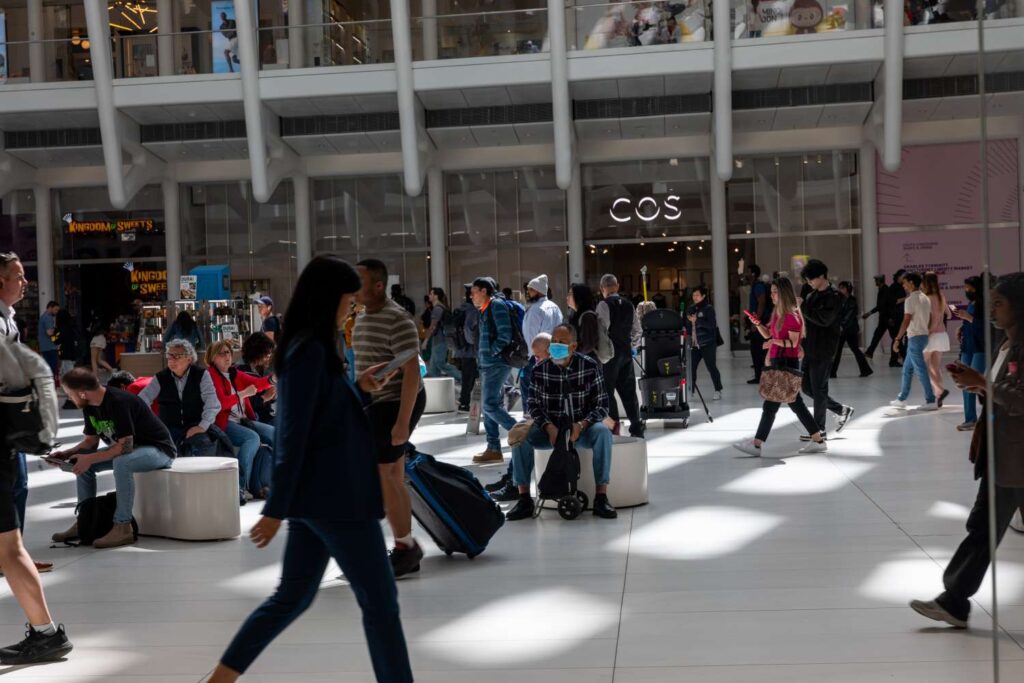:max_bytes(150000):strip_icc():format(jpeg)/GettyImages-2212790467-a78eaf44b9a74e28a483d58b6181d907.jpg)
Key Takeaways
- Major retailers shared their perspectives on how consumers are faring and what tariffs mean for the industry on conference calls following the release of quarterly results last week.
- Americans remain value-minded while shopping, and in some cases are pulling back on discretionary items even though tariffs haven’t fully affected prices yet.
- Yet, home improvement suppliers said shoppers have been making more big purchases, including appliances.
Household finances are tight. Inflation is elevated, and tariffs may exacerbate the pressure.
So how are consumers—and companies—faring? Several retailers offered insight while discussing their quarterly results on conference calls over the past week. Executives from big-box stores to furniture specialists weighed in on consumer spending, the impact of tariffs, and what it all means for corporate balance sheets.
Here’s what stood out:
The Hunt For Savings Hasn’t Let Up
Americans are shopping cautiously, and in some cases retreating from discretionary items, Target (TGT) and Walmart (WMT) executives said.
“They’re looking to stretch their budget,” Target Chief Commercial Officer Rick Gomez said, according to a transcript made available by AlphaSense. “So, value is very top of mind.”
In the wake of price increases, discretionary item sales have slipped as shoppers switch to alternative products or categories, Walmart CEO Doug McMillon said.
All the value-seeking contributed to soft cosmetic sales, according to Covergirl’s parent company Coty (COTY), but drove a 4% year-over-year rise in comparable sales at TJX Companies (TJX) last quarter. Demand for deals prompted the group behind TJ Maxx and HomeGoods to raise its outlook for the full fiscal year.
Bigger Purchases Are Up—Unless Borrowing Is Involved
Shoppers bought more appliances at Home Depot (HD) and Lowe’s (LOW), but remain wary of borrowing for big home improvement projects.
The average transaction price rose at Lowe’s as appliance and flooring sales picked up, said William Boltz, executive vice president of merchandising. And the number of $1,000-plus transactions at Home Depot grew 2.6% year-over-year last quarter, said merchandising executive Billy Bastek.
“However, we continue to see softer engagement in larger discretionary projects, where customers typically use financing to fund the renovation project,” Bastek said.
Tariff Costs Aren’t Being Tacked Onto Prices Yet
Charging customers more to offset tariffs will be a slow, calibrated process, according to executives wary of hiking prices before competitors do.
In fact, Walmart and Estée Lauder (EL) told analysts they have lowered some prices, and La-Z-Boy Inc. (LZB) said it offered more discounts.
Amer Sports Inc. (AS), a Finland-based athletic gear company, increased prices about 10% for Wilson—a brand known for tennis rackets—but hasn’t incorporated tariffs into prices for its Salomon or Arc’teryx brands, CFO Andrew Page said.
“The impact of tariffs has been gradual enough that any behavioral adjustments by the customer have been somewhat muted,” Walmart’s McMillon said. Still, as the retailer replenishes inventory at “post -tariff prices,” its costs are increasing each week, McMillon said.
Some Firms See Upside in the Tariff Era
Tariffs may provide some perks to companies with domestic production facilities.
The “vast majority” of La-Z-Boy manufacturing occurs in North America, which should shield its furniture from import taxes, CEO Melinda Whittington said. That may make La-Z-Boy merchandise more attractive to major retailers, she said.
Coty called tariffs a “major headwind,” but said it was reshoring production of fragrances bound for the U.S. This will give Coty a “relative cost advantage versus our peers, who all produce in Europe,” said CEO Sue Nabi.


